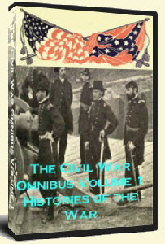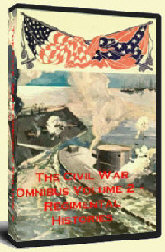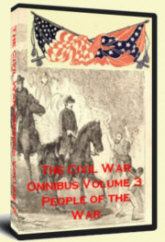The Civil War began as an exercise of patriotism. The new Confederacy had no army to speak of, and hence had to depend on volunteers. The Federal Army was woefully undermanned, and President Abraham Lincoln issued a request for volunteers as soon as it was determined that war was inevitable. These volunteers were ready to fight for their country, but after a space of months – or even weeks in some cases – they were ready to leave the fighting to other men and return to their homes. The shortage of manpower on both sides meant that the first drafts in America’s short history were instituted.
The involuntary conscription of men into the Army seemed to fly in the face of the very tenets that the Constitution was based upon – liberty and the pursuit of happiness certainly didn’t go hand in hand with a draft. However in both the Union and the Confederacy, civil war also meant a suspension of civil liberties for men of an age to fight.
The Confederacy, which suffered from the beginning a serious lack of men to serve, began conscripting soldiers in 1862. Three conscription acts were eventually passed by the Confederacy.
In 1863, it became clear to the Federal government that instituting a draft was the only way to sufficiently assure that the army would have the manpower required to continue the war, and they followed the Confederacy’s lead in authorizing the conscription of soldiers.
Both the Union and the Confederacy faced bitter opposition to the drafts. State governments in both regions fought the draft, citing it’s unconstitutionality, and when possible refused to find or prosecute drafted men who did not report for service.
In the North, draft riots became common whenever a draft act was passed, the most significant occurring in New York City in 1863, a riot that resulted in widespread damage, injury, and death.
The most controversial aspects of draft laws in both the Union and the Confederacy were the exemption and commutation exceptions that allowed men to avoid service.
By far the exemptions that caused the most bitterness were those that allowed men who were owners of large properties to avoid service. In the South this often meant that owners of large plantations and numbers of slaves, the very men who’d supported the war most ardently, were exempted from service, while subsistence farmers who were too poor to own slaves were drafted into service. In the North, this meant that the wealthy were exempted while immigrants and day laborers were compelled to serve.
There were exemptions, too, for certain occupations, for only-sons, and of course medical exemptions. Medical exemptions created loopholes that men of means were able to slip through, while men who were truly physically or mentally unfit to serve, but who could not afford to have a doctor certify them as such, were pressed into service.
The Union encountered a unique problem with the draft that the South simply could not afford: the paid soldier. Commutation – a payment of $300 dollars or provision of a substitute – allowed men to avoid service. Commutation flourished in the wealthier, more populous North; in the South, there were not enough men available or the cash to pay to avoid service. However, in the North, many substitute soldiers were sent in place of men would not serve; often immigrants or uneducated, these substitutes became a sizable part of the Federal Army.
But these hired soldiers came with a price – many did not report for service, and of those who did, more deserted the Army, resulting in the growth of bounty hunters who were paid to track these reluctant soldiers down and return them to duty.
“A rich man’s war and a poor man’s fight” became the phrase attached to the draft acts in both the Union and the Confederacy, an apt description. In the North, immigrants who’d not been in the United States long enough to form an attachment were sent to fight for the preservation of the Union, while in the South, the subsistence farmer was taken from his home to fight for the planter’s right to own slaves to do the work for him. Conscription was as easily dodged by those with means as bullets were difficult to miss for those without.


